Nichelle Nichols is well known to Star Trek fans as the actress who played Uhura in three seasons of The Original Series and six Trek feature films, but the new documentary Woman in Motion tells an inspiring story of the actress’ successful efforts to change NASA and bring Trek’s future infinite diversity into the space program of her day. Fathom Events is running screenings of the documentary on three days this week, and it’s worth checking out, even if you think you already know Nichols’ story.
UPDATE: ‘Woman In Motion’ Nichelle Nichols Doc Arriving On Demand And Digital On February 16
Structured in a standard documentary format with a linear story told through a combination of new and archival interviews along with historic photos and film, Woman in Motion is surprisingly compelling. Beginning with Nichols’ early life, you get drawn into a world of a young black woman fighting the Jim Crow-era mindset but inspired by the confidence to reach for the stars given to her by a supportive father. Even though Nichelle’s life on the road, getting her big break as a singer with Duke Ellington, and her fateful meeting with Gene Roddenberry on the set of The Lieutenant in 1964 could be a biopic in itself, the doc remains focused, using this early era to establish the ingrained tenacity that will carry her through to the main subject of the film, her work with NASA.
A solid chunk of the doc covers Nichols’ time on Star Trek. Roddenberry’s vision of a diverse future that included an African on the bridge of the USS Enterprise is reflected in Nichols’ perspective. She says, “I became essentially who I became through Gene Roddenberry. He discovered me. It was meant to be.” But the film does not ignore where the show fell short: Insights from co-star George Takei and late Star Trek writer DC Fontana along with David Gerrold reveal how in-depth storylines written for Uhura would get watered down and eventually eliminated through the revision process.
This leads to the famous moment when Nichols decided to leave the show, only to be convinced to stay by Martin Luther King, Jr., who felt that her being seen as part of the future was too important to lose during the Civil Rights era. While you may think you know this story, Woman in Motion finds new ways to retell it, which includes hearing from Martin Luther King III about how his father would find the time to watch Star Trek with his family. And MLK’s insight is proven true through testimonials given by many who talk about being inspired by Star Trek, including future astronauts like Frederick Gregory, congresswoman Maxine Waters, astrophysicist Neil deGrasse Tyson, and Star Trek: The Next Generation star Michael Dorn.
The main subject of the doc really kicks in as the story moves into the 1970s when Nichols began to speak out about the lack of diversity in NASA, with an astronaut corps still comprised entirely of white men. We hear from NASA insiders about their struggles to convince women and people of color to apply, leading them to reach out to Nichols to help.
The number of different perspectives from inside and outside the agency is impressive, helped along by Nichelle telling her story as well. Woman in Motion director Todd Thompson cleverly uses the interviews he did with Nichols combined with ones she did in the ’70s and ’80s, seamlessly weaving them together into a single narrative. A great storyteller, Nichols draws you in with genuine humor and emotion. Contemporary footage from Nichelle’s 1977 PR blitz on behalf of NASA is a delight to watch, featuring her at public events and doing the talk show circuit, culminating in a tour of NASA’s Johnson Space Center for Good Morning America. Spoiler alert: It worked.
Much of the doc tells the story of the Shuttle program through the ’80s and beyond, and the many astronauts and scientists brought in by the work of Nichelle and her company Woman in Motion, Inc. We see and hear from those who signed on due to her efforts and follow the progress of the program. This goes from the highs of the program kickoffs to the lows, like the 1986 Challenger disaster and the heartbreak of Nichelle seeing some of those she had help recruit lose their lives, including Judith Resnick, who had become a close personal friend.
At its heart, and without being sycophantic, Woman in Motion is a simple and inspiring story about trying to make Gene Roddenberry’s vision of a diverse future into a reality. And it’s not just about Nichols, but a celebration of everyone involved at NASA and beyond to make it possible. But even she will acknowledge the work is ongoing, summarizing where we are on that journey with “We have only begun to begin.”
Women in Motion is highly recommended to anyone interested in Star Trek history or the history of the late 20th century, especially the space program. Told from a wide array of perspectives, the documentary drives home its story with an impressive collection of imagery and film, including some from behind the scenes of Star Trek.
Woman in Motion extended to 3 nights this week
Fathom Events originally planned for Woman in Motion to screen for a single night, on Tuesday, February 2, but they have now added Thursday, February 4, and Saturday, February 6. For participating locations and tickets visit www.FathomEvents.com.
Following the feature presentation, fans will be treated to an exclusive behind-the-scenes documentary about the making of Woman in Motion, which includes additional interviews with Nichols and other notable guests from the documentary, deleted scenes, and additional footage from the making of the film.
Woman in Motion is expected to be released for video on demand later this year.
Clips and trailer
See more news and analysis about Star Trek documentaries at TrekMovie.com.

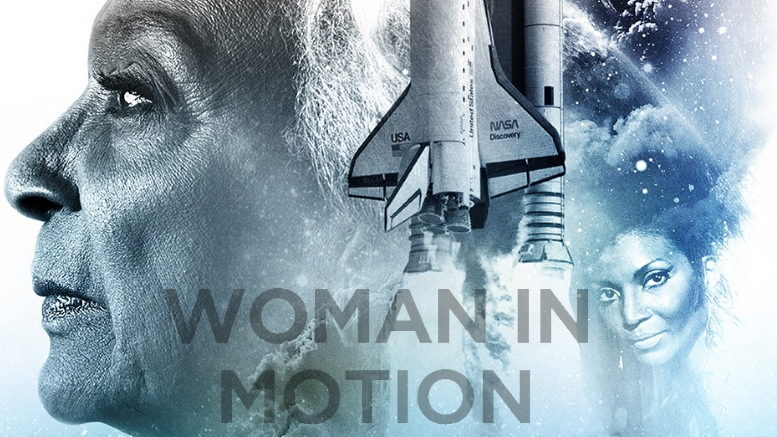
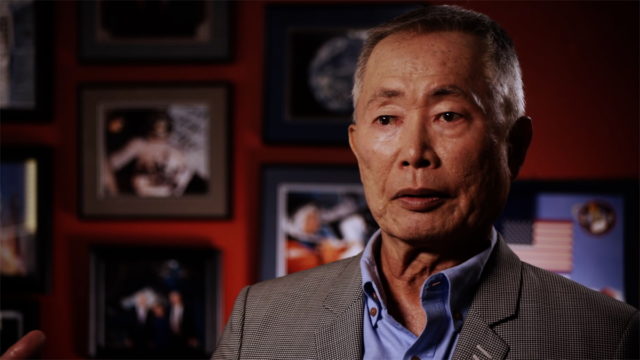
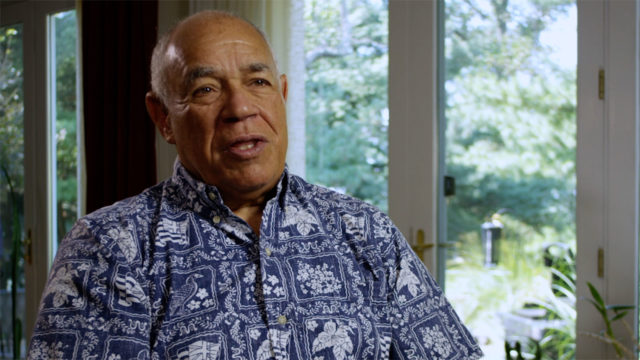
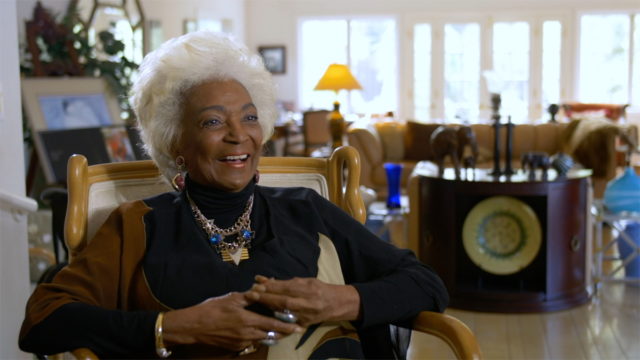

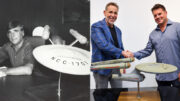

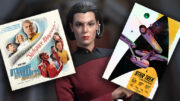
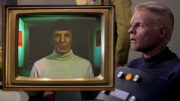
movie theaters, unbelievable! and in all the covid-explosion places you’d expect…
I’ll have to wait for streaming, I guess, but I definitely want to see this. What, they couldn’t make a deal to run it on Apple or CBS-AA or Netflix as a special for Black History Month? They have to run it in the largely empty theaters? A little tone-deaf, I’d say.
It’s entirely possible they all saw it and passed…
Really bugged that I can’t stream this now.
It’s incredible how tone deaf and irresponsible it is during a pandemic to INSIST this be shown in theaters. They could make far more money with a streaming on demand. Perhaps it was a contractual obligation to place it in theaters. I’m trying to rationalize this dangerous situation searching for some sanity in this.
Agreed. I would imagine we’ll be able find this for rent on Amazon Prime pretty shortly after theater release. In this situation, sanity = greed, imo. Once no one shows up, they’ll change their tune.
i will wait to stream this as well. For those of us who started our fandom watching TOS in its original run, it’s egregious of them to screen this in theatres only.
Damn, Nichols was something. Not only a talented singer and drop-dead gorgeous, but among the most articulate of the cast when discussing the show, and probably the most successful at leveraging its cult status to effect change in the real world. I wish Uhura had been given more of a chance to shine, but at the end of the day this legacy is far more important.
Ms. Nichols is beautifully articulate here.
In previous story here about this doc, one of the comments complained, without having seen it, that the entire premise was somehow disrespectful to the white guys who landed on the moon.
I don’t get it.
I hear similar ideas here whenever there’s a story about diversity – the idea that diverse casting is somehow pandering/political correctness — and is taking roles away from white male actors (who have plenty of roles).
When did fairness, or reflecting what the world really looks like, become a bad thing?
.
Not just that, but it was based on the faulty logic that because the misogynistic and racist practices of the period whitewashed the diverse races and sexes out of the “official” photographic record of the period so as to minimize their import to the effort, that therefore a diverse group had not collaborated together to get them there.
The implication being made that 3 white guys just “willed” themselves to the moon without having to rely on assistance from a diverse group of others to get there.
Except that acknowledging that the work NASA did in the 1960’s was pretty un-diverse, at least by today’s somewhat twisted standards, *is* acknowledging reality. (And no, contrary to the other comment, there was no “whitewashing.”) Now, we can argue as to whether this state was deliberate (which would have been stupid and evil) or due to unavoidable circumstances, historical or otherwise (which themselves may have been the result of stupidity and/or evil, but not immediately), or something else, and whether it hurt or helped in the long run- all, in my view, legitimate questions- but history is history, even if Hollywood, that paragon on historical accuracy, would like to suggest otherwise.
Re:no whitewashing
Again, as I pointed out before, there was whitewashing from the get go; starting with washing the Nazis and their diverse slave rocket labor right out of the “All Anerican” whitebread rocket program history. And I was born and raised in the “whites only” VA where “The South” insisted that any “colored” contributions be whitewashed out of the historical naratives lest they get uppity. They did this to NASA by controlling the purse strings in Congress.
The Space “history” written in the 1950’s and 60’s textbooks, et al, was far less accurate than the credence given it by you. Compared to that the current Hollywood fiction, that you disdain so, is the work of Rhodes scholar historians.
Also, science knowledge is not static but changes as new data comes to light. So I’m a little mystified how you believe American Space Science History to have been this static always accurate thing that could never benefit from a fresh perspective as old buried truths are dug up, i.e. rediscovered?
I never said it couldn’t benefit. Indeed, I said that refusing new input would be stupid.
Well, in that era, the bridge of the starship Enterprise was considered diverse despite the white human male officers outnumbering the others. I’m not sure what other meaning you ascribe to the term?
Also, how do you account for your apparent insistence that despite the historical fact that most of then NASA’s facilities and employees were in the Jim Crow actively white supremecist South, that NASA somehow escaped its dictums which included the evils of actively whitewashing histories?
Perhaps you are conflating equal employment opportunities with significant contributions from diverse groups, which included women and blacks, but was by no means limited to just those two examples?
I don’t know that any of the farewell endeavors Nichols and her inner circle are planning to see up her legacy will ever come to fruition, so it’s a joy to know this documentary exists and is not just a throwaway hagiography.